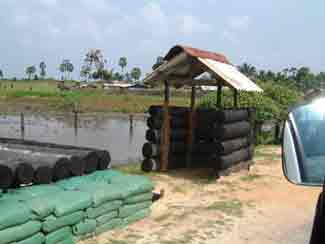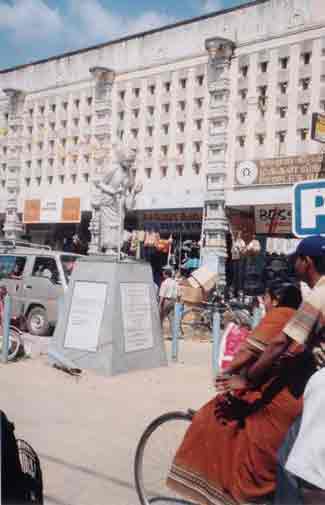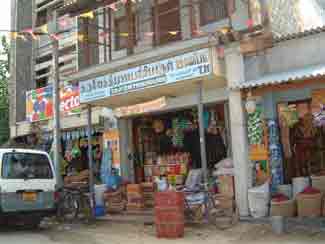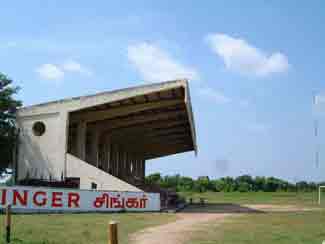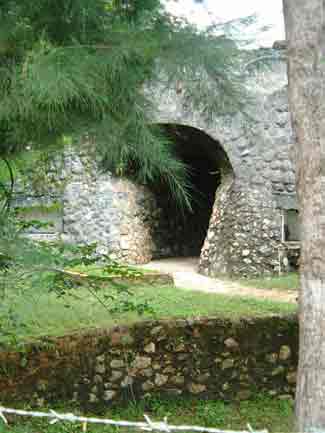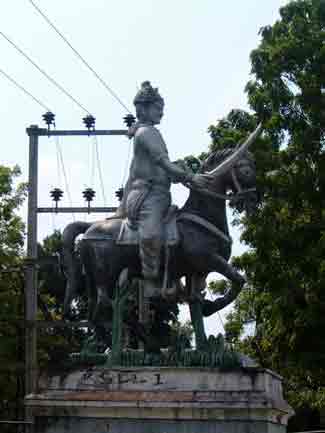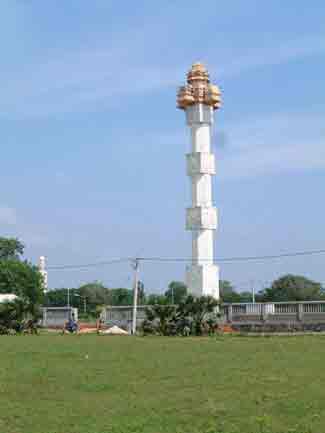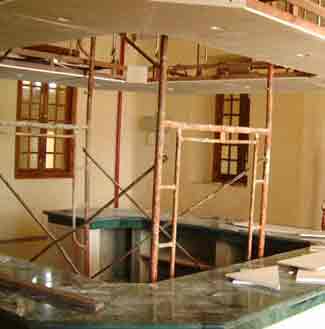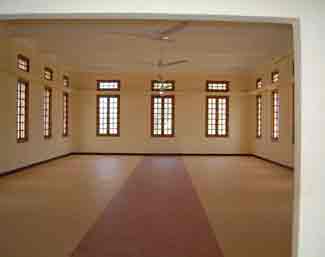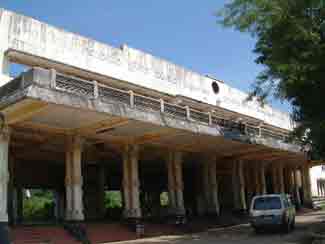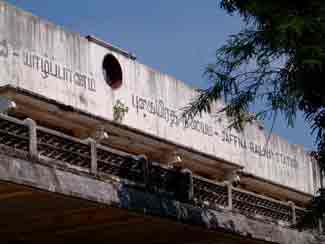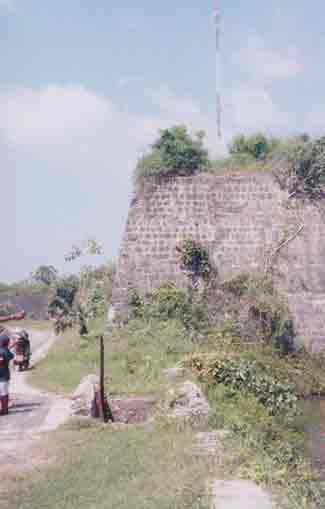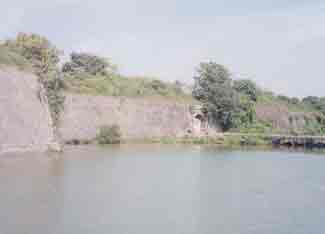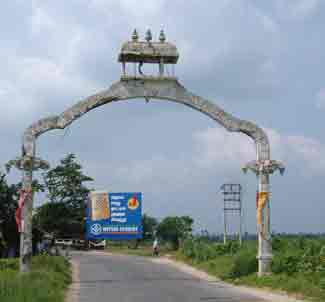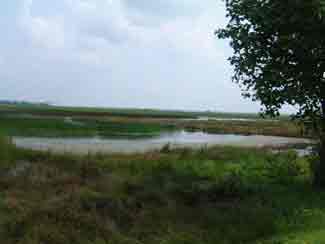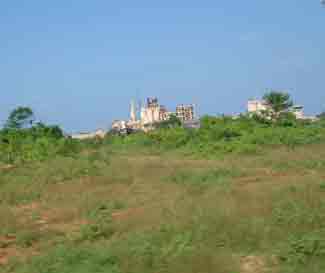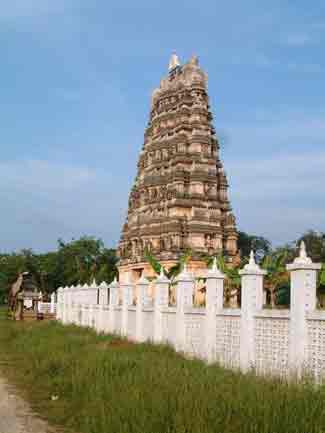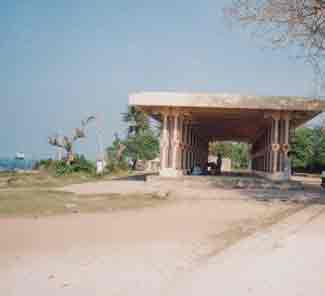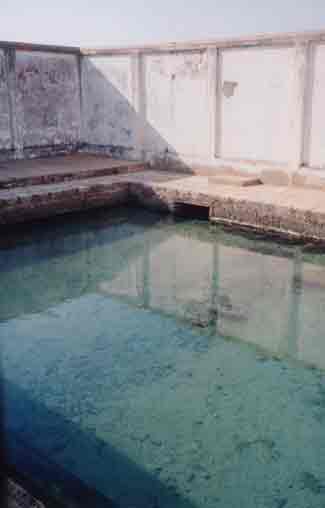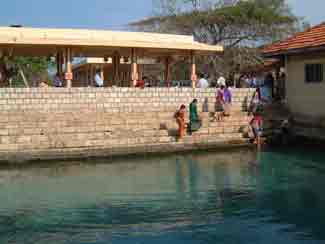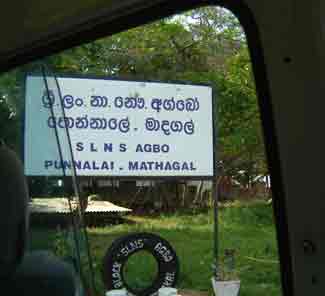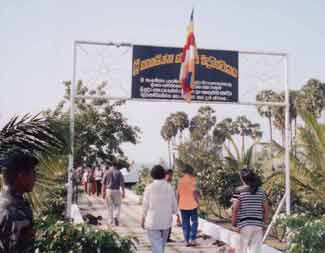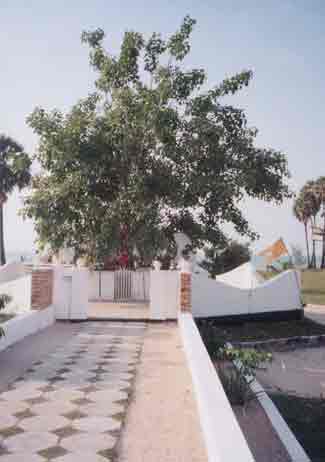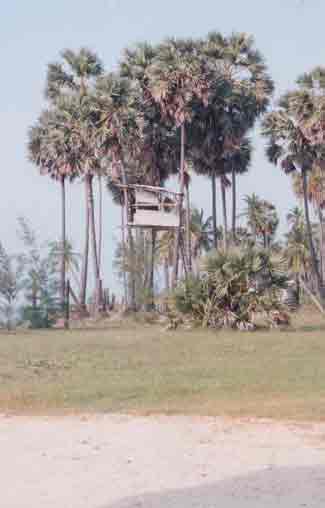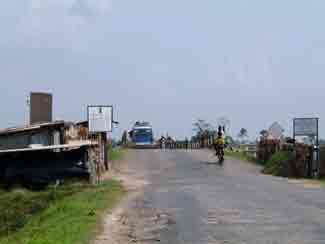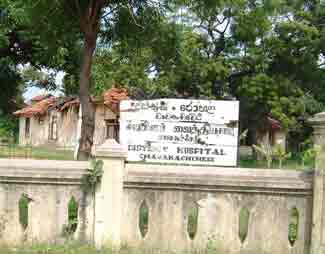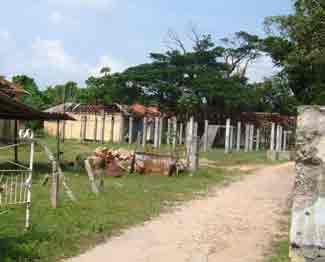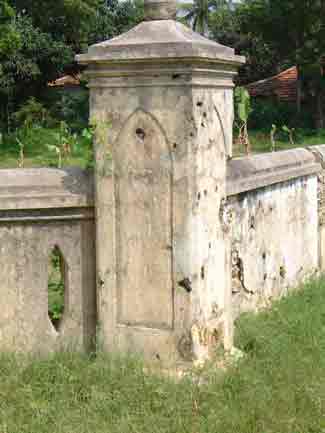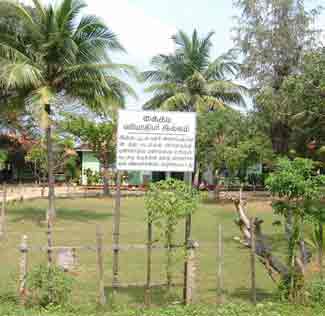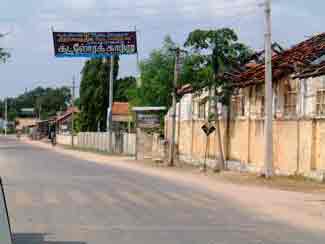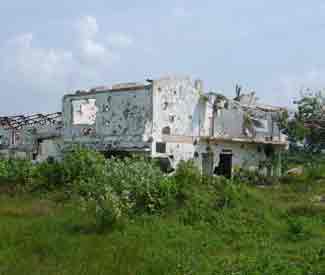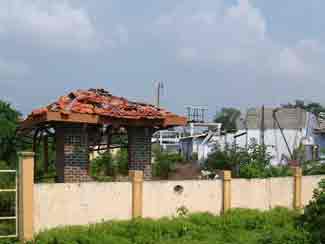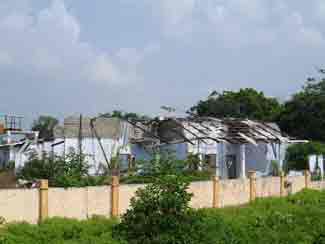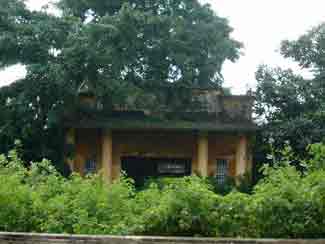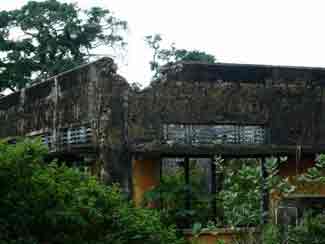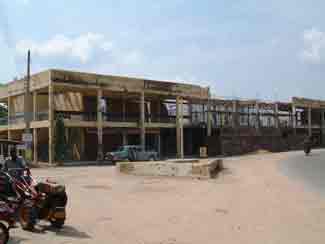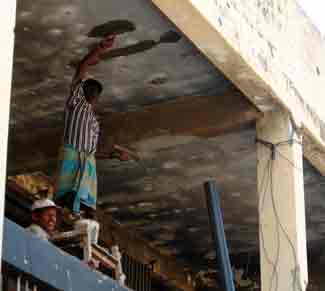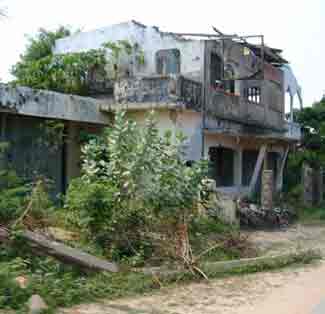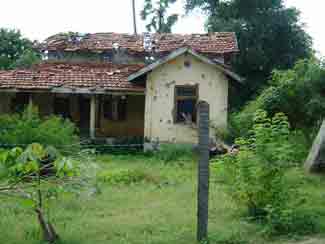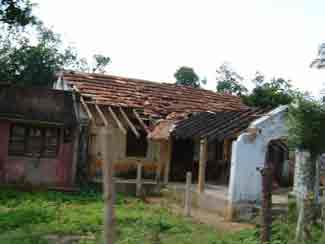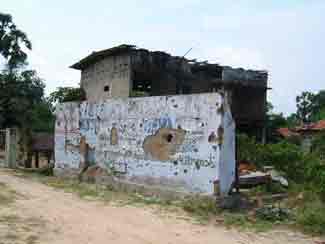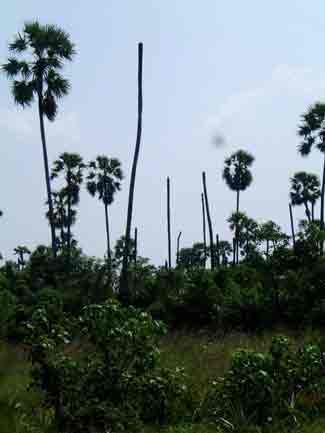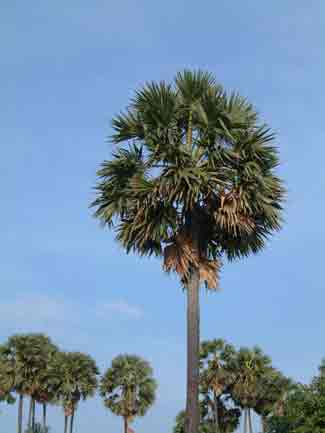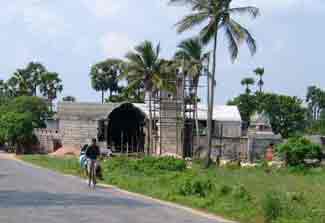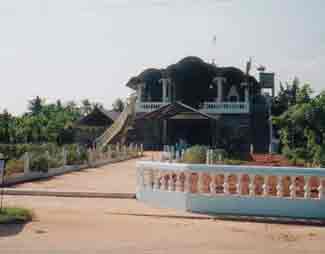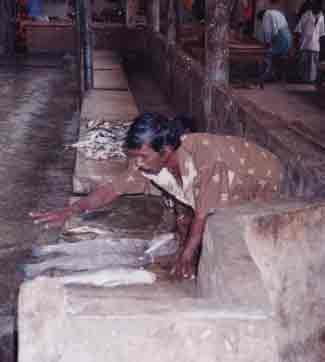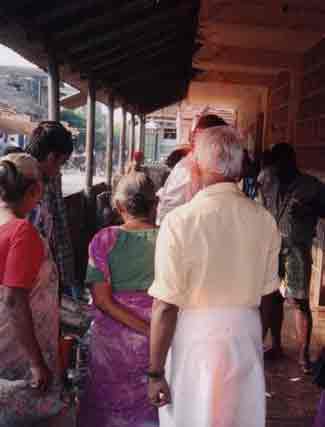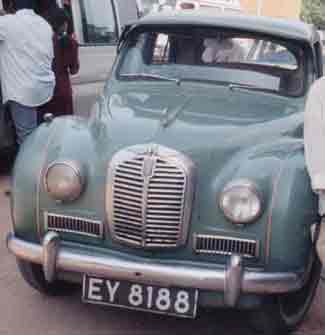|
The commonest sight in Jaffna these days is the overpowering presence of Sinhala soldiers. They are everywhere - on foot, on bicycles, and driving around in Jeeps and tractor-trailers. They are all in their uniforms and are carrying guns. Forty thousand of them, I hear. This is in contrast to today’s Colombo, where you hardly see any army presence. The following are my impressions of Jaffna, a year after the ceasefire, gleaned during a two day trip in December 2002, and captured on film. These are pictures that you will not see in the Sri Lankan newspapers. Large areas of the peninsula are designated as High Security Zones (HSZ), where the Jaffna people are simply not allowed to go without permission. Even when one is there with permission, photographs are not allowed. In the rest of the peninsula (outside the HSZ), the army presence was so huge, and intimidating to me, that I was fearful of pointing my camera directly at anything military. My photography, I must admit, was done rather surreptitiously. In the thickly populated areas all over the peninsula, there are hundreds of ‘mini army camps’ - one every half a mile or so - sandwiched between Tamil homes on all the main roads. These are houses, obviously seized from the Tamil owners. All are secured with tall fences (cadjan or aluminum) around the perimeter of the compounds, fortified with loops of barbed wire. Signs, in Sinhala and Tamil, at the gates of these mini-camps warn against entry without permission. Incidentally, I saw a comical sign at an entrance to the HSZ that read: “Entry without permission will be resisted with Minimum Force”. MINIMUM FORCE!! In addition to the mini-camps there are hundreds of ‘army posts’, at every street junction and at frequent intervals along major roads. They are manned by soldiers, hanging around lazily, with their guns. I photographed one that was unoccupied at that time - sneakily of course. There are numerous theories as to why the Tigers, who were on a roll after the Elephant Pass victory, stopped short of Jaffna town. Indians, Pakistanis and the Americans have all been blamed. I, however, am convinced, especially after this visit, that it is because of these so called ‘mini-camps’, that are clustered in the midst of heavily populated Tamil ‘civilian’ areas. An effective ‘human shield’, no doubt, that the Norwegians say cannot be dismantled to resettle the displaced because it would weaken the military advantage of one side! Jaffna town is bustling with shoppers, bicycles, three-wheelers and some antique cars. Food items are plentiful, but at a higher price than in the south. The streets of Jaffna city still has some decorations from the Last "Maveerar Naal" celebrations, held in November 2002. One Shop even had a banner announcing the same. The Jaffna Stadium was empty, and dilapidated. A few young boys were hanging out at the stadium, and looked at me with suspicion when I took this picture. The Kittu Park was also empty. The swings and sea-saws were broken and there were no children playing there. It has a barbed wire fence around it. The statute of King Sangili, just outside the Kittu Park, is in good shape. S.J.V. Chelvanayakam Memorial located near the library is undergoing some minor repairs. The library, that was burned down on 1 June 1981 by the Sri Lankan Police, is being repaired. This is the only major reconstruction work I saw in the peninsula. I wondered if it is being done more as a showpiece, than servicing the more urgent needs of the people. Architecturally, the building looks different from what I can remember of the old library. The foyer being refurbished also looks different from what it was. The reading room is devoid of books and furniture. Of course, it will never have the rare books and manuscripts it once housed and so wantonly destroyed by the Sri Lankan state. Apart from the repair to the library there is no other government (or foreign) aided reconstruction to be seen in the peninsula. Public facilities such as the hospitals and transportation are totally decrepit. The doctors and nurses at the hospital complained to me that after an year of the ceasefire they are yet to see improvements to the facilities and medical supplies. The patients at the hospital looked so sad and forlorn, that I could not bring myself to photograph them. The Jaffna train station, destroyed in the late eighties by the Indian army (IPKF), looks like a haunted building. The remnants of the beautiful architecture of the train station is still visible. The platforms of the train station, however, are hardly recognizable. The inside of the station was eerie and scary. The old station master's office is now home to bats. I got out as soon as I could. Elsewhere in the town there are hundreds of bombed-out buildings. This was where the old courthouse used to be. Only two walls of the old Jaffna (Dutch) Fort are still standing. The moat around the fort is still beautiful. But the area itself is overgrown with weeds. The archway entrance to the city of Jaffna is chipped, but still standing. The billboards, however, are new and shiny. The appearance of the Chemmani plains belies the horrors buried here. Thousands of Jaffna residents (Amnesty International says 600) who ‘disappeared’ during the government offensive in 1995 are believed to be buried here. The visit to Keerimalai, which is inside the HSZ, was not easy. I had to get permission from the army camp at Tellipalai. A van full of Sinhalese got their permits more easily. All vehicles were searched. The once affluent houses along the KKS Road, between Tellippalai and Maviddapuram, are deserted and in various states of disrepair. The once productive KKS cement factory is inside the HSZ and therefore is not functional. The Maviddapuram Kandasamy temple is also inside the HSZ. I understand that the priest is allowed to go there but worshipers are not. Keerimalai is inside the HSZ. The buildings and the ‘Kerni’ are in good condition. They are being used only by the army personnel, and those who have army permission - Sinhala pilgrims, government officials, other VIP visitors and a few Tamils with ‘influence’. The enclosed women's pool in Keerimalai, which I had never visited before! It was forbidden then!! The men’s section of the Keerimalai now sees women in Kandyan saris dipping their feet. I have never seen anything like this before!! Inside the HSZ all the signs are in Sinhala and English only. The signs at entrances to the HSZ, warning people not to enter, however, are in Tamil also. The number plates on all army vehicles are also in Sinhala only. The message behind these HSZ sign boards and the army vehicles (brazenly excluding Tamil) is quite clear - it is the army of the Sinhala government, and not a ‘national army’ of a ‘multiethnic country’! In Mathahal, there is now a brand new Buddhist temple. The soldier who accompanied us (this chaperone is mandatory inside the HSZ) told us that Sangamitha (King Asoka's daughter) landed here two thousand five hundred years ago, to bring Buddhism to Sri Lanka! I wondered, what happened to the story about her landing in Mihintale with her brother Mahinda! I am sure there is some rational explanation like, she first landed in Mathahal and then flew to Mihintale! There is a new Bo-Tree to mark the spot where ‘Sangamitha landed’. I am sure in a few years time the story will become - ‘Sangamitha herself planted the tree!’ Adjoining the tree there is a new Buddha temple, with a plaque in Sinhalese that tells this story about Sangamitha. The grounds are beautifully landscaped and meticulously maintained. There were at least 75 Sinhala pilgrims on the day I was there, all believing the Sangamitha story. Right next to the temple is this observation post to ward off intruders. The visit to Chavakachcheri the next day did not require army permits. The road to the bridge in Navatkuli is newly paved, but is still quite dilapidated. I cannot visualize, with all the imagination in my power, the 1995 event of 500,000 Tamil people, with their very young and the very old, crossing this bridge, on foot, in the rainy season, to escape the Sri Lankan army onslaught. It must have been unimaginably horrible. The destruction of Chavakachcheri, in the year 2000, has to be seen to be believed. In May 2000, the Sri Lankan army having lost its strategic base at Elephant Pass, retreated through Chavakachcheri. While on the run, they bombed and destroyed everything in this second largest city in the Peninsula. The destruction of Chavakachcheri is total. If not for the fading sign one wouldn't know that this used to be a busy district hospital. I did not go through the gates of the hospital for fear of landmines, but this is what the hospital grounds look like from the gate. The wall outside the hospital showed bullet pockmarks. They must have been shooting at random. The old peoples’ home in Kaithaday, near Chavakachcheri, which was bombed by the Sri Lankan army on 20 May 2000, killing thirty residents according to the ICRC. Drieberg's College in Chavakachcheri with the roof blown off. The banner seen announces a recent movie made in Thamileelam, now showing in theaters in Toronto. Every building in the area is either damaged or destroyed. It is hard to imagine why. The ‘enemy’ was far behind, the civilians had fled and the town was empty. It must have been pure revenge. Houses and public buildings - nothing had been spared! This used to be the Magistrate's Court in Chavakachcheri. Another view of the Magistrate's Court, completely destroyed and overgrown with weeds. The retreating Sri Lankan army bombed the Chavakachcheri market also. This, once busy, market is empty now. A few shopkeepers are returning to the Chavakachcheri market, trying effect minor repairs, with no help from the government that destroyed it. Buildings closer to the main roads have suffered more. Families with children used to live in these houses. Another beautiful Jaffna style home, with the archway entrance at the road, and a long cemented passage to the front veranda. This building looked like some kind of factory, also damaged badly. I Wonder how many people lost their jobs! Even the Palmyra trees didn’t escape. Hundreds are seen all over the peninsula, with their tops blown off. A few that managed to escape the shells. Gorgeous, aren't they? Jaffna people, it appears, have become more religious. They are reconstructing the temples before doing their homes. The new Aanjaneyar (Hanuman) temple in Maruthanamadam junction. Live Carnatic music was being performed when I was there, carried to the road through loudspeakers. Friday evening saw a large gathering of devotees. My trip wouldn’t have been complete without a visit to the Jaffna Fish Market (Cinna Kadai). Compared to my earlier visit in the seventies, the pickings were rather slim. There were only two vendors with rather small stocks. The effect of the government ban on fishing in Jaffna is quite evident. This was a ‘Fish Auction’ at Cinna Kadai. About 10 retailers were bidding for a small heap of fish that morning. The winner, I think, was lucky. He walked off with the lot for Rs.2000.00 ($20.00)! A beautiful Austin A-40 Somerset in pristine condition. Don't tell the collectors who are selling theirs on the internet for as much as Forty Thousand Dollars. - S. R. |
|
|
6 February 2003 |

